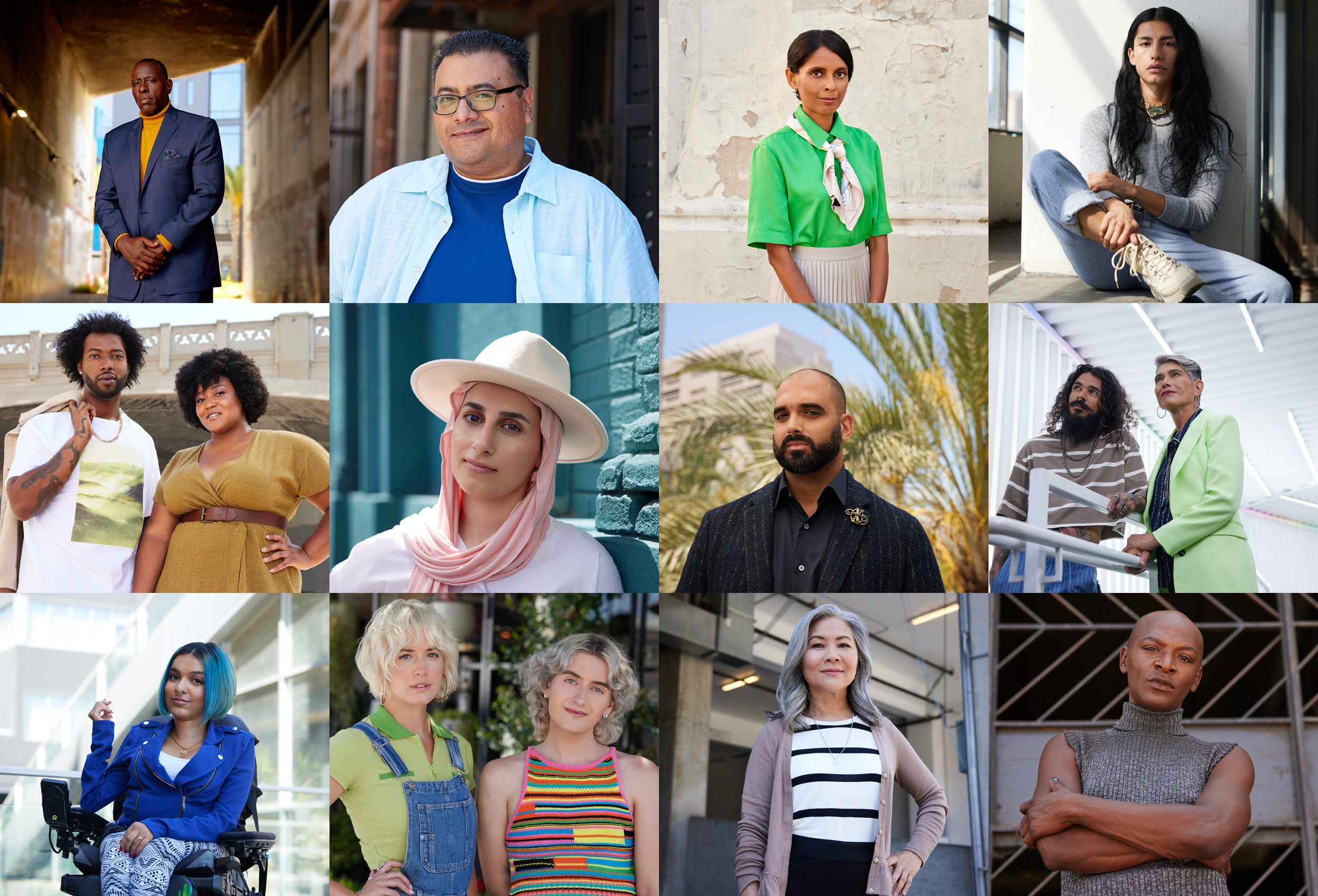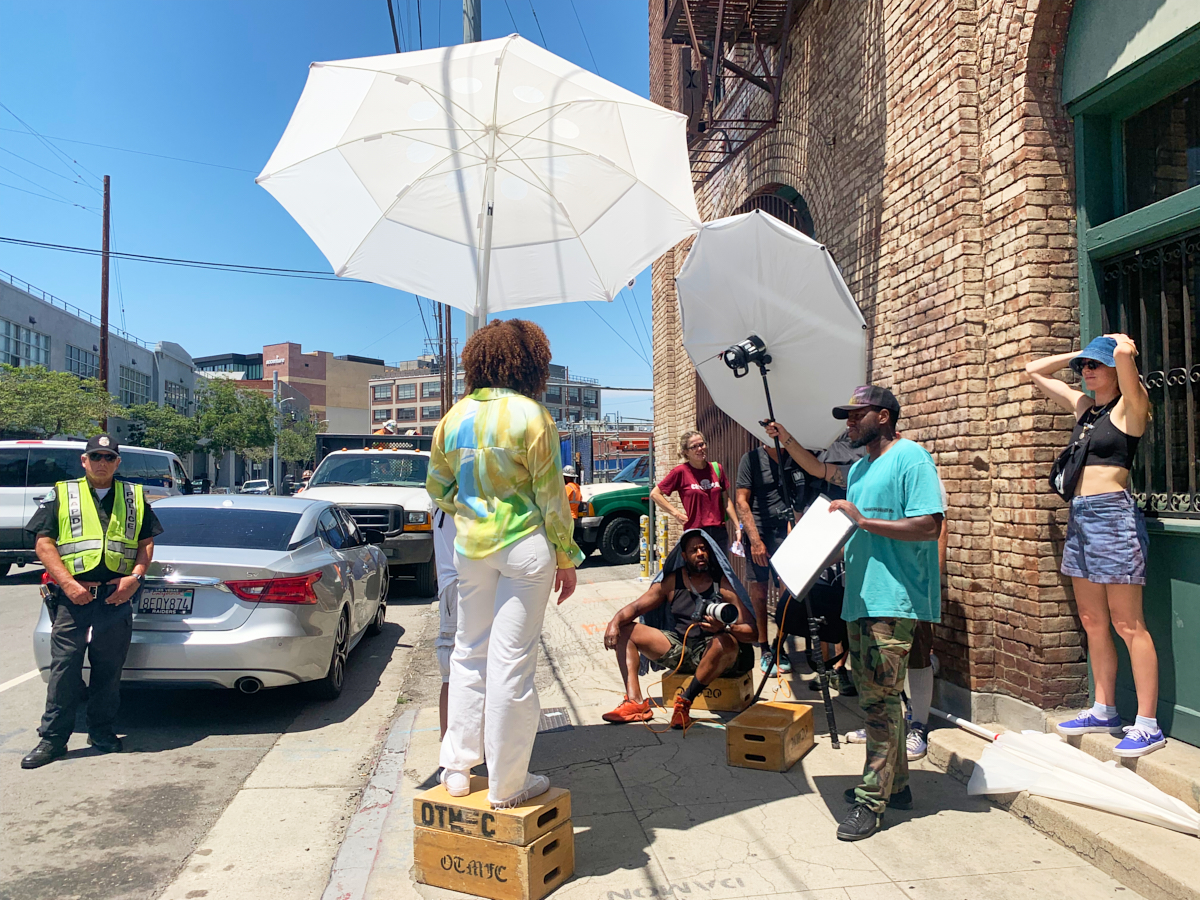Cisco
Photographer: Stan Evans
Agency:The Hatch
Client: Cisco
Creative Director: Rick Vargas
Producer: Connie Conway
Stylist: Kaityln Lusk, Eliza Karpel
Makeup: Valerie Harvey, Valerie Kan
Photo Assistants: Ethan Sharkey, Marcus Soto, Guillermo Ulysses
Digital Tech: Tom Mishima
Video: Marrice “Mo” Hill
Video Editor: Jeff Moustache
Casting – Eastside Studios
Location Scout: Isaac Levy
Photo Retoucher: Natalie Schwarz
Social / Digital Strategy: Austin Holt
BTS Video
How Cisco is pursing pay fairness
Their commitment to Social Justice, 2 years in the making
Change Systems, Change the world
Heidi: What made this project diverse and equitable? Those are two different pillars for a way forward.
Stan: The first part is about working with intention. We had a mix of cast and crew from different physical abilities, to gender and age, and ethnicity, and that was by design. Equitable is about paying anyone in or on the production what the job is worth rather than paying based on appearance.
You mentioned equal pay, why would one pay one person more than another? Doesn’t that continue the divide?
I just mentioned equal pay because usually diverse creators and actors/models are paid less. You see it with Social Media Creators and in the mainstream entertainment business. In advertising I’ve seen more disparity in the length of payment terms and the way they’re handled. Agencies and clients are drawing out payment terms. Smaller shops and creatives have to fund or string out production costs on their own credit and this makes it more difficult to build wealth and build a business. Drawn out contract demands hurt minority shops, limit talent and disrespect agencies as well as creatives. Less experience, less opportunity, and lack of legal representation often drives desperation to accept terms even though they may be unbalanced.
Who does that help, and who does that harm?
I don’t think large corporations have had to think about it as much because they have long lines of credit and financing. Long payment terms stretch vendors and creatives who aren’t operating with large amounts of capital. Unfortunately if the goal is to empower diverse creatives and showcase different narratives that can’t be done if they are hindered financially by production costs. Someone could be perfectly capable creatively but if they don’t have the funds to front production costs they’re out of the running.
How did your experience inform this project?
I’m part of a community that has dealt with bias and discrimination; that perspective along with empathy gives me the ability to put myself in other people’s shoes to figure out how to share their stories. I’m goal oriented so my efforts tend to focus on how to fix the situation – I do that with photos and videos. Always try to figure out how you can expand your creativity with a client and over deliver.
Heidi: How did this project come about?
Stan: Cisco reached out about creating a collection of images that would represent their brand worldwide for their Social Justice Campaign.
The BTS video VO closed with this was more than money could buy, in the end, aren’t we all simply looking for dignity and to be seen? How did this dignify those you photographed?
Money can buy alignment for a time but to create something that will stand the test of time it takes an ideal. Something people in front of the lens, people behind the lens, and people in the audience can join in and be a part of. For this project I think we listened and used the photography to hold a mirror to our subjects and reflect who they are. The crew orchestrated images that they could see themselves in and it illuminated self worth. We made everyone part of the process. That adds value to everyone and brands across the board.
The casting naturally turned some people away, what was the criteria for casting?
I disagree that anyone was turned away. We actually showcased many who normally don’t get adequate representation. Native Americans, people with disabilities, and the queer community. It was actually a pretty full spectrum given time, budget, and locations. It could have easily gone kitsch and been a remake of the United Colors of Benetton but the shoot stayed grounded in realism. And to be clear, props to Benetton for being one of the first brands to promote diversity, that just wasn’t the art direction we were going for here.
Perhaps my question was unclear, did you include everyone that showed up at the casting?
Cisco had a broad overview of communities they were hoping to include. Much of this is determined by the different regions Worldwide where their services are used. (India, Asia, Africa etc so the imagery would be used in those markets). The initial casting was digital and pretty straight forward with headshots and measurements. I had a few extra asks as I am very intentional with diverse casting. l requested their IG handles and we asked for audition tapes (which is rare for stills) because I wanted to learn a bit about them, They included small details about themselves because instead of casting for a part we were actually asking people to come as who they are for this shoot. There weren’t any wrong answers, it was just about giving different people a spotlight to share their uniqueness.
How are you mentoring the next generation?
I started the Social Studies Show in 2019 before George Floyd and the pandemic as a way to introduce diverse creatives to learn about the advertising world – giving insights and advice from experts they might be unable to connect with. At the time people didn’t really understand what I was doing and dismissed it but as the importance for advertisers and creatives to look deeper into different perspectives and how to build within diverse communities, viewers began to understand its importance. It’s a guide to anyone who wants to watch and learn about marketing and activism. There’s no gatekeeping and it’s free. Working with my team we are attempting to scale mentorship broader than 1 to 1 learning. Through diverse media we are compounding our efforts towards equity, equality and business sustainability. Here’s a recent podcast with Toby Kaufmann of Facebook and previously Refinery 29 that focuses on empowering diverse creatives. It was a powerful episode and applicable to our conversation.
What is great resource for emerging photographers?
The best resource I’ve seen for real answers is one my Mentor Monte Isom created with Fstopppers it’s honestly the best $299 a photographer could spend because Monte really breaks it down. Photo Consultants and Amy V. Cooper as a great asset. So much of the photo industry is business oriented and artists need to focus on that end, probably more so. I have a podcast with Amy that will be dropping in a few weeks and she will be offering a discount on her Master Class on the Social Studies show.



